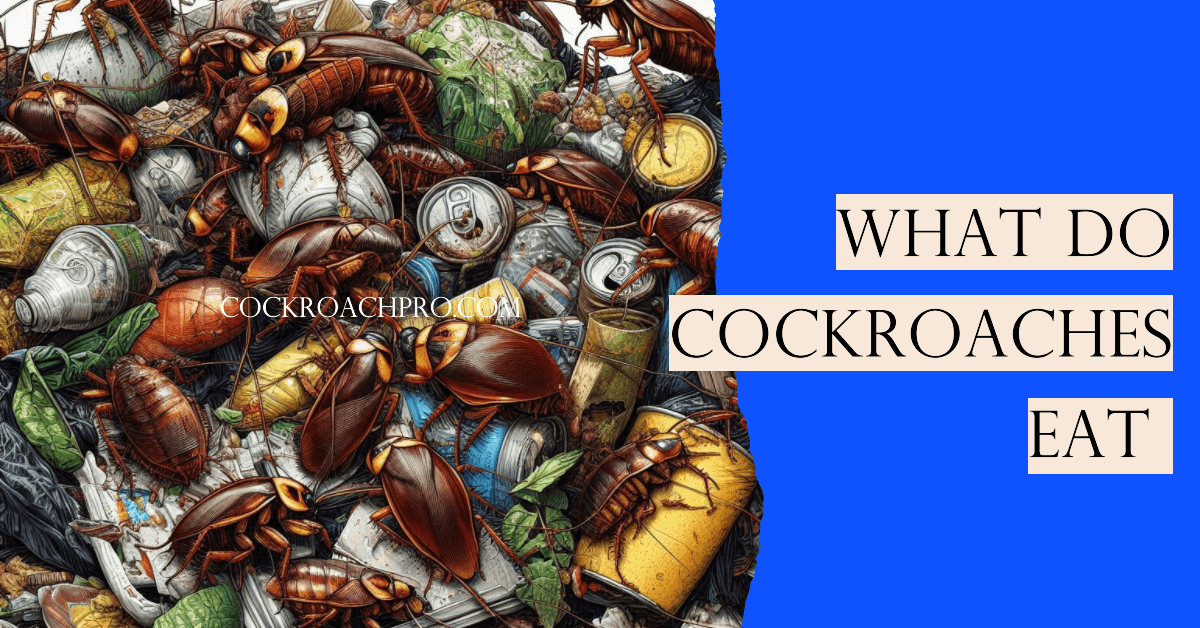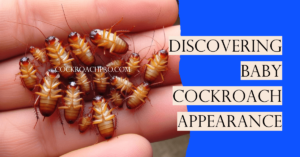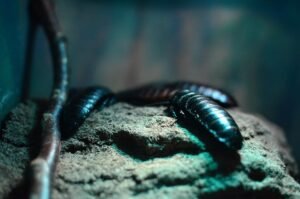Are you wondering or curious to know what do cockroaches eat for supper, breakfast, or dinner? The answer is they eat almost anything they want.
Did you know that cockroaches are opportunistic feeders? These omnivores have a voracious appetite and can devour bed bugs, and just about anything in their path.
From leftover crumbs to decaying matter, these critters are not picky eaters. But have you ever wondered what exactly cockroaches eat and why it matters?
Cockroaches are omnivorous creatures, meaning they are opportunistic feeders that can eat a wide variety of foods, including bed bugs.
Their diet is essential for their survival and reproduction. Understanding what these resilient pests consume is crucial for effective pest control measures.

What Do Cockroaches Eat ?
What do cockroaches eat? So, let’s talk about what do cockroaches eat. These little critters are not picky eaters at all! In fact, they can survive on almost anything they find.
1. Organic Matter
Cockroaches are nature’s recyclers, playing a crucial role in breaking down organic matter. They thrive on decaying plants, dead insects, and other organic debris found in their environment.
This means they can be found in various outdoor locations where organic matter is abundant, such as gardens, compost heaps, and forest floors. Cockroaches are particularly active at night, scavenging for these organic materials to satisfy their dietary needs.
2. Human Food Scraps
Cockroaches are notorious for infiltrating kitchens and pantries where they have access to an array of human food scraps. From crumbs left on countertops to food residue on unwashed dishes, they’ll devour virtually any edible remnants.
The presence of even the smallest food particles can attract these pests. Their ability to squeeze through tiny gaps in search of a meal is remarkable, making it essential to maintain a clean kitchen and promptly clean up any spills.
3. Starches and Sweets
Cockroaches exhibit a preference for starchy and sugary foods. Common household items like bread, pasta, cereals, and pastries are particularly attractive to them.
Additionally, sugary snacks, spilled fruit juices, or leftover desserts are all fair game. Their affinity for carbohydrates can lead them to areas where these foods are stored, and they may even nibble through packaging to access the contents.
4. Proteins
Proteins are another essential component of a cockroach’s diet. They are opportunistic feeders, meaning they’ll readily consume protein-rich sources, including meat, fish, dairy products, and even pet food.
In homes, they can be found lurking near pet food bowls or scavenging in trash cans containing discarded meat or dairy products. The presence of these protein sources can sustain cockroach populations.
5. Non-Food Organic Materials
In their relentless search for sustenance, cockroaches may sometimes target non-food organic materials. This includes substances like glue, found on the back of envelopes or within book bindings, and even cardboard. While not their primary source of sustenance, cockroaches may chew on these materials if they are readily available and accessible.
6. Garbage
Cockroaches are often associated with garbage bins and dumpsters, as these areas provide abundant sources of organic waste. They can feed on the food scraps and waste that humans discard, contributing to their population growth. Garbage bins are attractive to cockroaches due to the consistent availability of discarded organic matter.
7. Decaying Wood
Certain cockroach species, such as wood roaches, primarily feed on decaying wood and plant matter. They play a vital ecological role in breaking down dead plant material and returning nutrients to the soil.
Related: Do cockroaches bite?: The Truth Is Revealed Today
Wood roaches are typically found in outdoor environments where decaying wood is prevalent, such as forests and woodpiles.
what do hissing cockroaches eat?
Hissing cockroaches, scientifically known as Gromphadorhina portentosa, have somewhat different dietary preferences compared to common household cockroaches. These large, exotic insects are often kept as pets or in captivity.
Their diet primarily consists of the following:
Vegetables and Fruits Hissing cockroaches are primarily herbivores, and they favor a diet rich in fruits and vegetables. These can include items like lettuce, carrots, apples, bananas, and other fresh produce. Providing a variety of fruits and vegetables helps ensure they receive a well-rounded diet.
Leaf Litter and Decaying Plant Matter: In their natural habitat, hissing cockroaches can be found in leaf litter on the forest floor. They consume decaying plant matter, leaves, and fallen fruit. When kept in captivity, they can be provided with leaf litter or decomposing wood to mimic their natural diet.
High-Fiber Foods: Hissing cockroaches benefit from high-fiber foods, as these help with their digestion. Items like oats, grains, and bran can be included in their diet to support their nutritional needs.
Protein Sources: While hissing cockroaches are primarily herbivorous, they may occasionally consume small amounts of protein. This can come from sources like fish flakes, dog food, or insect-based diets. However, protein should be a smaller part of their diet compared to fruits and vegetables.
Fresh Water: In addition to their solid diet, hissing cockroaches require a source of fresh water. You can provide water in a shallow dish or through a substrate that holds moisture, like a sponge or damp paper towels. Ensuring they have access to water is crucial for their well-being.
Hissing cockroaches are relatively easy to care for, and their diet is simple to provide. It’s important to maintain a clean environment for them and ensure that their food is fresh and free of contaminants.
Additionally, offering a variety of fruits, vegetables, and other plant-based foods helps meet their nutritional requirements and keeps them healthy when kept as pets.
what do madagascar hissing cockroaches eat?
Madagascar hissing cockroaches primarily consume a herbivorous diet, which includes a variety of plant matter. They favor fruits and vegetables like lettuce, carrots, apples, and bananas.
Additionally, they feed on leaf litter and decaying plant material, which replicates their natural diet in the forested regions of Madagascar. High-fiber foods such as oats, grains, and bran are also beneficial for their digestion.
While their diet is primarily herbivorous, they may occasionally consume small amounts of protein from sources like fish flakes, dog food, or insect-based diets. Access to fresh water is crucial for their well-being, which can be provided through a shallow dish or a damp substrate like a sponge or moist paper towels.
what do cockroaches eat in the wild
Cockroaches in their natural habitat have a varied and opportunistic diet that primarily consists of decaying plant matter, microorganisms, and carrion found in their ecosystems. They also feed on the juices of ripe fruits, nectar from flowers, and plant sap.
Some species may consume other insects or small animals, and they are attracted to freshwater sources for hydration. The specific diet of wild cockroaches can vary depending on their species and the environmental conditions of their habitat.
what do cockroaches like to eat the most
Cockroaches are highly adaptable and opportunistic feeders, but if they have a preference, they are most attracted to starchy and sugary foods. Starchy foods like bread, pasta, and cereals, along with sweet substances such as sugar, syrups, and fruit juices, are particularly appealing to them.
These items are often their top choices when foraging for food in human environments. However, it’s important to note that their diet can vary depending on the availability of food sources, and they are known to consume a wide range of organic materials, including decaying plant matter, protein sources, and even non-food items when necessary.
Conclusion
Understanding the diverse diet of cockroaches is essential for effective pest control. By implementing proper sanitation practices, sealing food containers, and addressing any moisture issues, you can reduce the attractiveness of your home to these resilient scavengers.
Moreover, identifying and eliminating potential food sources is an integral part of integrated pest management strategies to keep cockroaches at bay and maintain a clean, pest-free living space.





